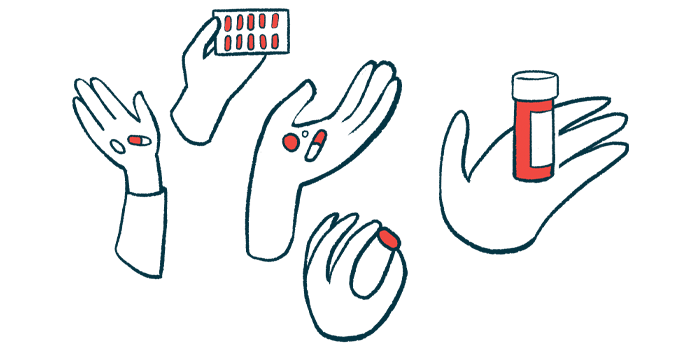Long-term Agamree data show better growth, lower fracture risk
Study finds benefits for bone strength and eye health over traditional steroids

Agamree (vamorolone), a type of corticosteroid approved to help preserve muscle function in people with Duchenne muscular dystrophy (DMD), appears to work as well as traditional corticosteroids at maintaining walking ability, but carries a lower risk of side effects such as broken bones, eye problems, and stunted growth.
That’s according to a new analysis announced by Agamree’s developer, Santhera Pharmaceuticals. The company said it is preparing detailed findings to present at a scientific conference in early 2026.
“We are truly delighted to offer the DMD community a corticosteroid treatment option that can provide long-term benefit and significantly reduce the occurrence of some of the most debilitating side effects that often lead to dose [reduction] or discontinuation,” Shabir Hasham, MD, Santhera’s chief medical officer, said in a company press release.
A closer look at how Agamree works in the body
DMD is a genetic disorder that causes muscle weakness and wasting. Corticosteroids have long been a mainstay of DMD treatment. These therapies mimic the activity of the stress hormone cortisol, helping to limit inflammation and reduce muscle cell damage, thereby preserving muscle function. But long-term use of corticosteroids can cause difficult side effects, including weight gain, skin problems, mental health issues, and stunted growth in children.
Agamree is a dissociative corticosteroid. This means it is designed to interact with cortisol receptors in a way that preserves anti-inflammatory activity to preserve muscle tissue but minimizes the risk of unintended side effects. It is approved for DMD treatment in the U.S., the U.K., the European Union, China, Hong Kong, and, most recently, Canada.
Approval of the therapy was based largely on results from VISION-DMD (NCT03439670), a Phase 2b trial comparing Agamree with the traditional corticosteroid prednisone. In that study, data indicated both therapies preserved muscle function to a similar degree, but Agamree was associated with fewer side effects.
Santhera is now sponsoring a Phase 4 clinical trial called GUARDIAN (NCT06713135), which is gathering long-term data from DMD patients who took part in VISION-DMD and other Agamree studies. The new analysis includes data from up to 110 participants in GUARDIAN or other clinical trials and access programs. All of these participants began Agamree between ages 4 and 7 and had not used corticosteroids beforehand. The median follow-up time was five years, with some participants tracked for as long as eight years.
Long-term data reveal durable benefits
Results showed the average time to loss of ambulation in patients taking Agamree was nearly the same as what is typically seen in DMD patients treated with standard corticosteroids such as prednisone or deflazacort. However, rates of vertebral fractures (broken bones in the spine) and cataracts (clouding in the eye that can obscure vision) were significantly lower with Agamree. Those on Agamree also had significantly less growth stunting, Santhera reported.
“These data provide important evidence that long term treatment with vamorolone provides durable efficacy, with a substantial reduction in the risk of spine fractures and of improvement in height, in contrast to what is observed with conventional steroids,” said Eugenio Mercuri, MD, PhD, of Universita Cattolica del Sacro Cuore in Italy.
Outcomes related to body weight and body mass index (BMI, a ratio of weight to height) were similar between Agamree and traditional corticosteroids. Overall, the findings in this long-term review were consistent with earlier Agamree studies, Santhera said, adding that further analyses from the GUARDIAN study are expected as longer-term data become available.
“It is good to see long-term efficacy comparable to other corticosteroids, and the data on height and bone health are consistent with other [Agamree] studies. These data now clearly show the benefits of treating early and maintaining treatment at effective doses with [Agamree],” said Craig McDonald, MD, of the University of California Davis. “Interestingly, the benefits we see in preservation of muscle function, height, and better bone health may also have important implications for older DMD patients, for example, for upper-limb and respiratory function. I look forward to the ongoing data collection in the GUARDIAN study.”







